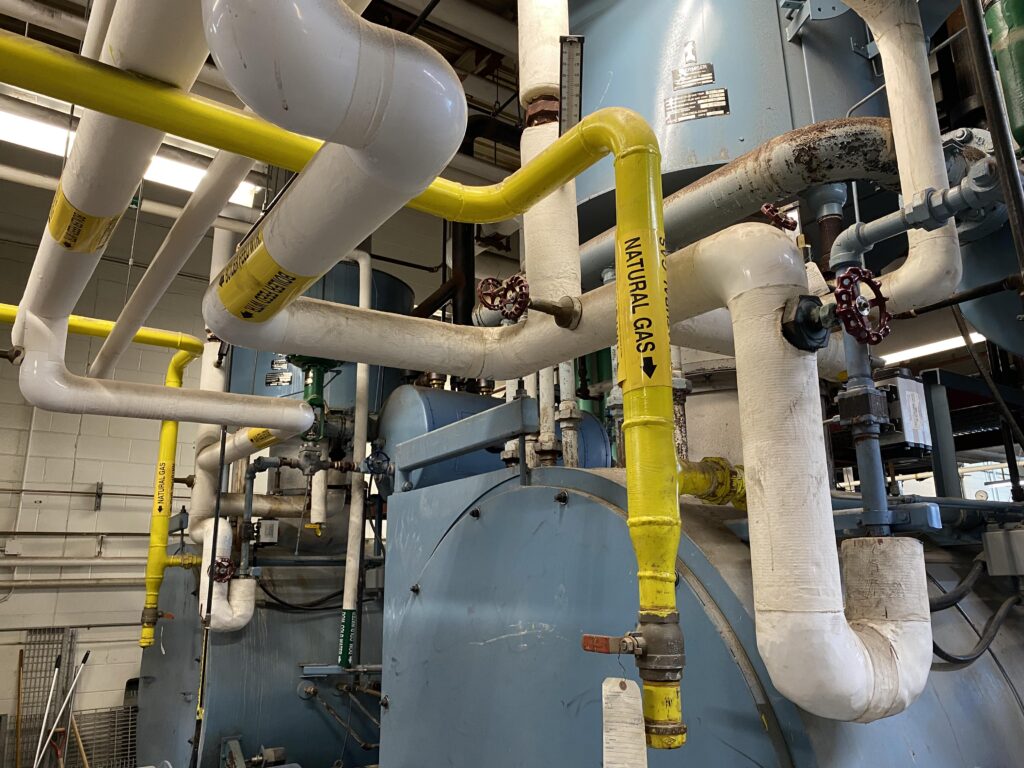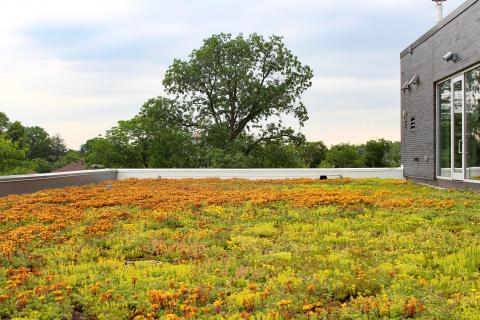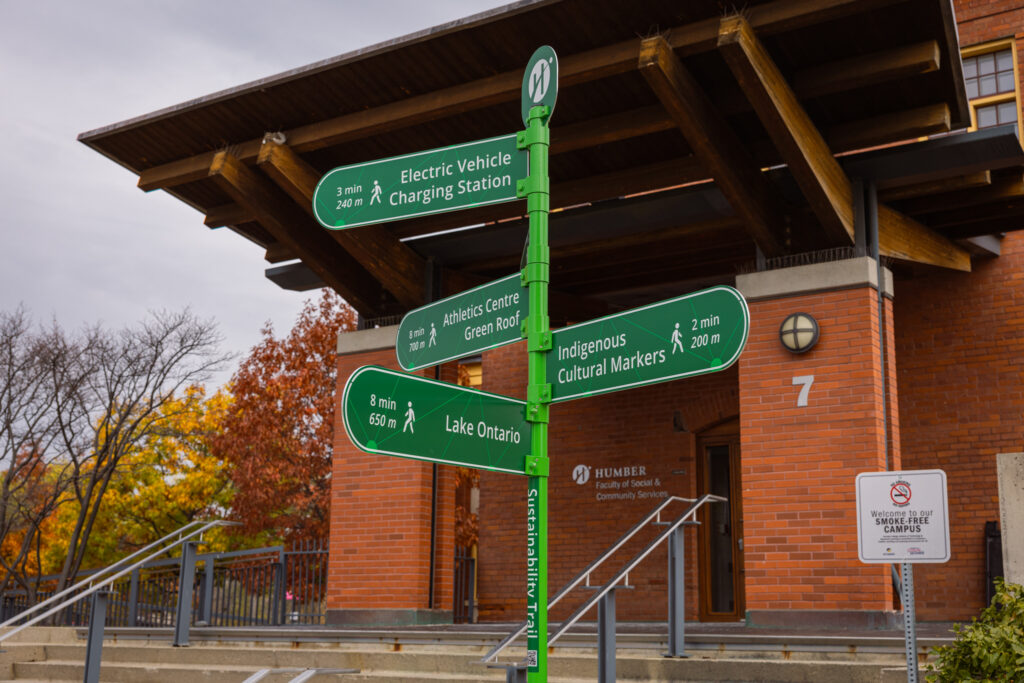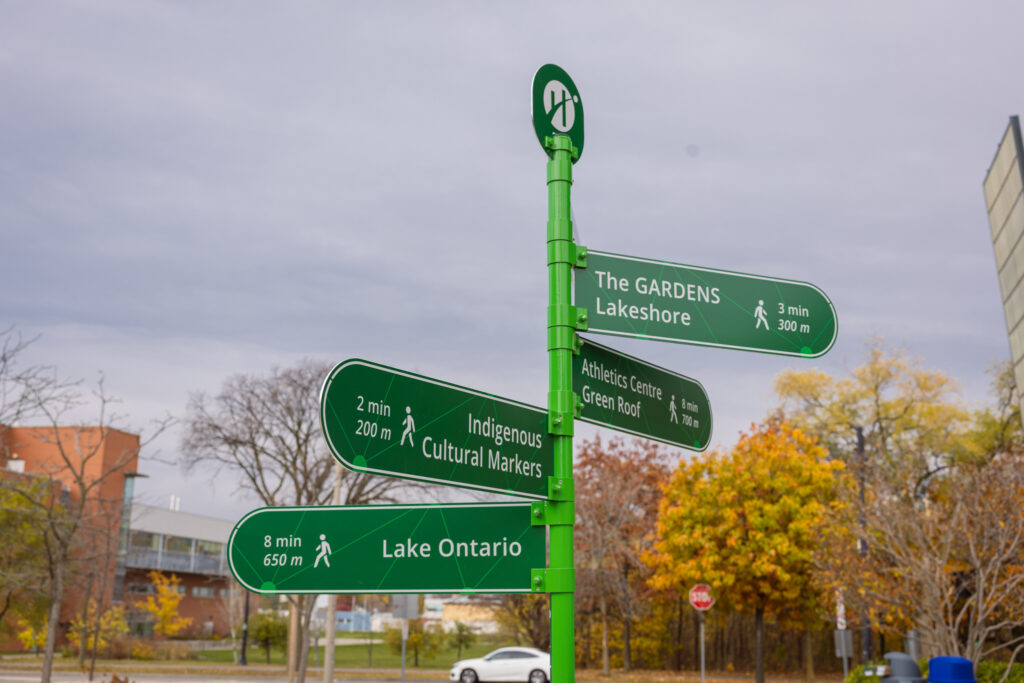“There are a lot more facets of sustainability than just making our buildings more efficient.”
Tessa Soltendieck.
Humber College has numerous sustainability initiatives in place and is targeting to reach net-zero emissions by 2050. The Humber’s Office of Sustainability has been growing for 10 years now, and leads the sustainability operations in the college.
We got a chance to sit down with the sustainability manager of the Office of Sustainability, Tessa Soltendieck, and she mentioned that the office has just transitioned from the Capital Development & Facilities Management department over to the portfolio of Inclusion and Belonging.
Soltendieck highlighted that they recognized there are a lot more facets of sustainability than just making Humber’s buildings more efficient or making sure we’re conserving water.
“We’ve gone from just operations to doing a lot more engagement, in an effort to build a sense of culture and community of sustainability at Humber,” Soltendieck said.
Earlier this year, Humber received the gold STARS (Sustainability Tracking, Assessment & Rating System) and was named one of Canada’s greenest employers. Soltendieck says that achievements are good to bring visibility to the work they’re doing, but that’s not what drives them.
“We don’t do the work in order to get the accolades, we’re not in this to win awards. But the reason why we pursue rating systems like STARS is because it provides a framework for how we can continually improve our sustainability performance as an institution over time,” Soltendieck said.

The office has many projects ongoing. We want to highlight some of them so you see what the college is doing to become more environmentally friendly across both the North and Lakeshore campuses.
North Campus
SWITCH

“Humber is making a SWITCH for the climate.”
The SWITCH project aims to decrease the Humber’s dependence on fossil fuel by renovating the heating and cooling system at the North Campus.
The project will cut the reliance on natural gas by 70% and the college’s total greenhouse gas emissions by 30%. This is going to be possible by switching from a steam-based system constructed in the early 70s to a modern hot water system generating heat mostly using electricity.
Friendlier Reusable Container

You must have noticed the blue containers around the North and Lakeshore campuses.
The Friendlier containers are used in the main dining options across both campuses. When students grab a container, they pay $0.5, but they can ask for a refund through the Friendlier app.
By using reusable containers, students can make a positive impact on the environment. Soltendieck says that the North Campus had a similar program before, but has now switched to Friendlier. It is more user-friendly and, logistically, is a much better program for Humber.
Solar Photovoltaic System

At the North campus, many buildings have rooftop solar photovoltaic systems. Together, they can produce a total of nearly 1,400 kilowatts of electricity, which is equivalent to powering approximately 55 houses for a whole year.
Think about the parking structure – that’s not your ordinary garage. It has solar panels on the sides and at the top of it, and they are the secret behind making the Barret Centre for Technology Innovation (BCTI) a net-zero building. The BCTI runs on clean energy from these solar panels.
Similarly, eight other buildings also have rooftop solar photovoltaic systems that help power the campus.
Lakeshore Campus
Green roof at the Athletics Centre

The 2,000-square-foot green roof at the Lakeshore Athletics Centre is one of the many sustainable features of the building.
Green roofs are super important in urban areas, they reduce the heat island effect and also provide a rainwater buffer. They act like a sponge, helping manage the rainwater, so it doesn’t immediately go into the sewer system.
They are like superheroes for our city, plus they increase the biodiversity on the campus.
“They’re also just beautiful. There’s an argument to be made for the effect of green infrastructure. If you’re looking over onto a green roof as opposed to some tar roof, it’s much better for your peace of mind and people tend to be happier when they’re surrounded by greenery,” Soltendieck said.
Sustainability Trail

You may have noticed the new sustainability features recently added to both Lakeshore and North campuses.
The Sustainability Trail is plaques that feature the sustainability initiatives on campus. They promote and raise awareness of the sustainable features developed by the Humber community.
Soltendieck says this is a project that they’ve been working on for years and they’ve finally brought it into place.
“We’re trying to create more visibility for the things that we do around campus. They [students] understand not only the great work we’re doing, but that sustainability can and is built into everything we do on campus,” Soltendieck said.

Promoting sustainability
The office also promotes sustainability among the Humber community, as they believe sustainability is much more than just renovating buildings.
Soltendieck mentioned that they get invited into classrooms to talk about various subjects related to sustainability and help students understand the connection between their coursework and sustainability.
They also do peer-to-peer education and have a group of at least 40 ambassadors, volunteers from around the college, who help promote sustainability. Students learn from students, and they think this is a great model.
“Even though we’re just an office of five people, we try and be everywhere as much as we can to help everybody understand what their role is in terms of being a sustainability champion on campus,” Soltendieck said.
If you have any questions, want to learn more about the sustainable initiatives on campus or want to get more involved, you can email the Office of Sustainability at [email protected] and also connect with them on social media @sustainhumber.
“Be active in your community and participate in environmental advocacy. Look for the link between sustainability and policy, even though politics isn’t very interesting, it’s where a lot of important decisions are made,” Soltendieck added.
Are you curious about the Indigenous initiatives we have on campus? Check out the indigenous markings around Humber College campuses.
Follow us on Facebook, Instagram and TikTok for all things student life.
